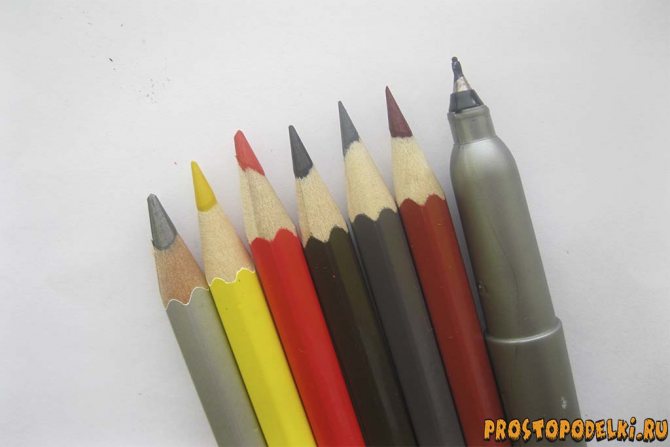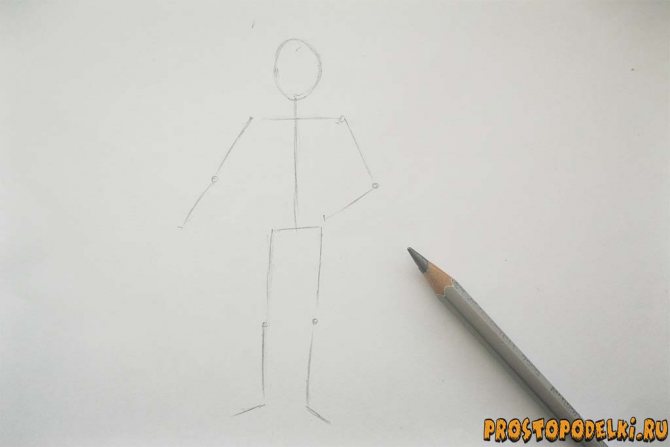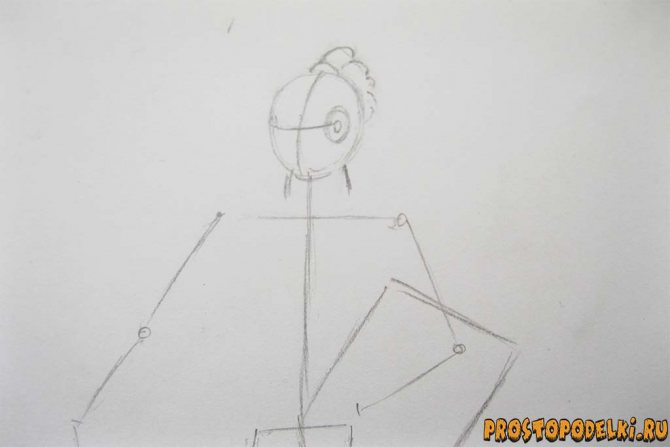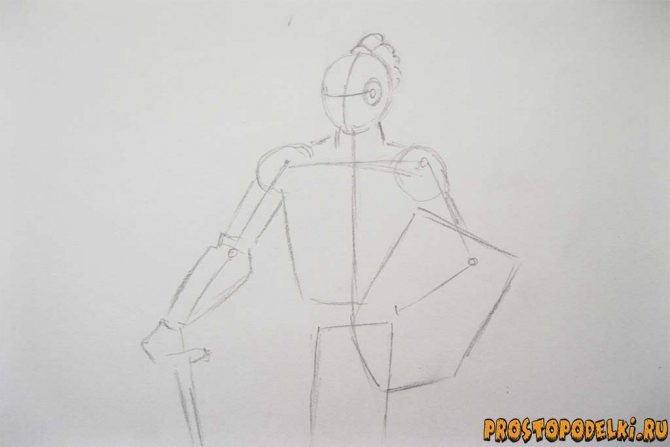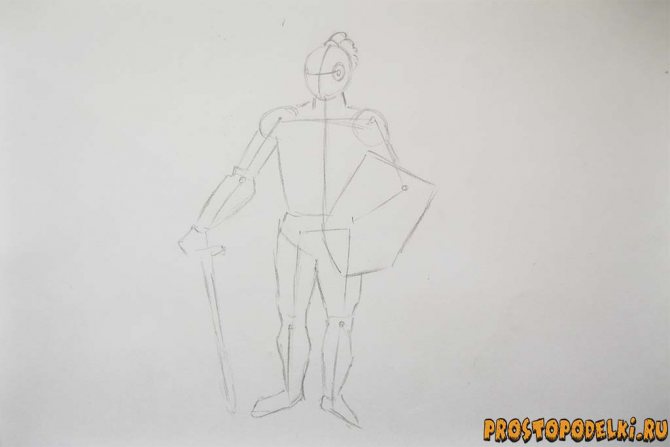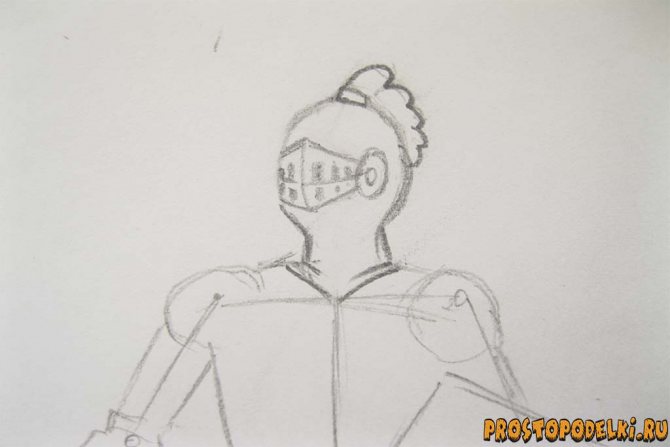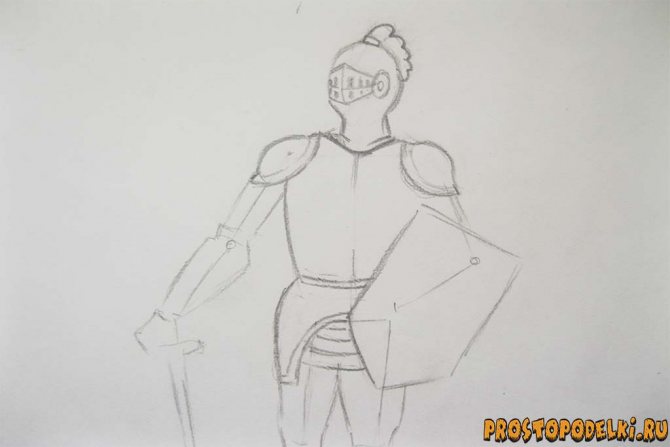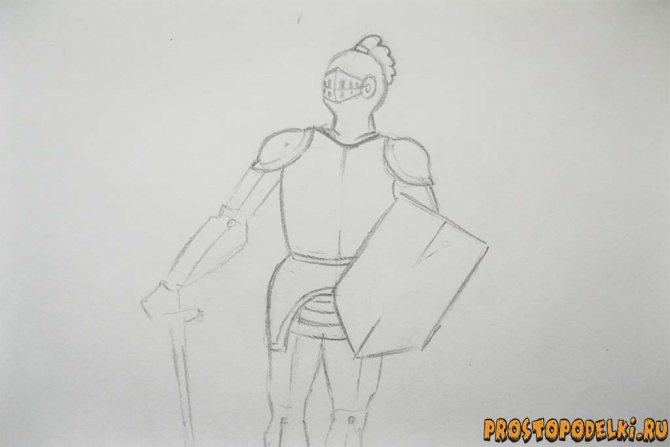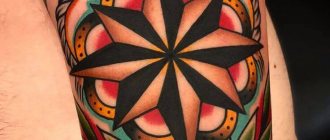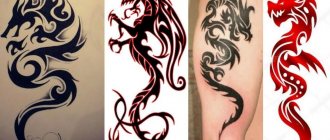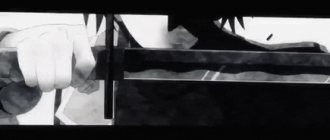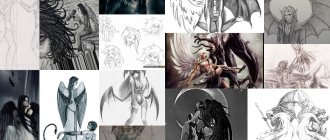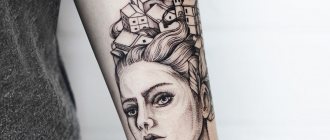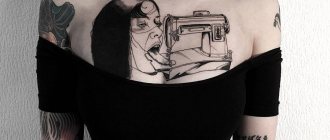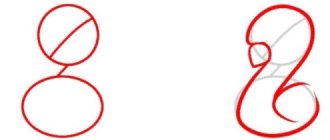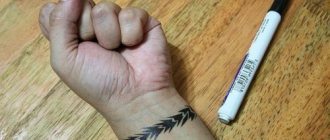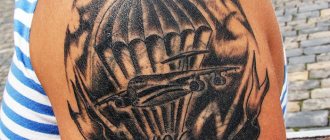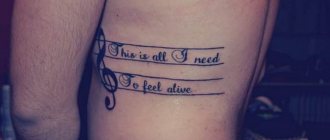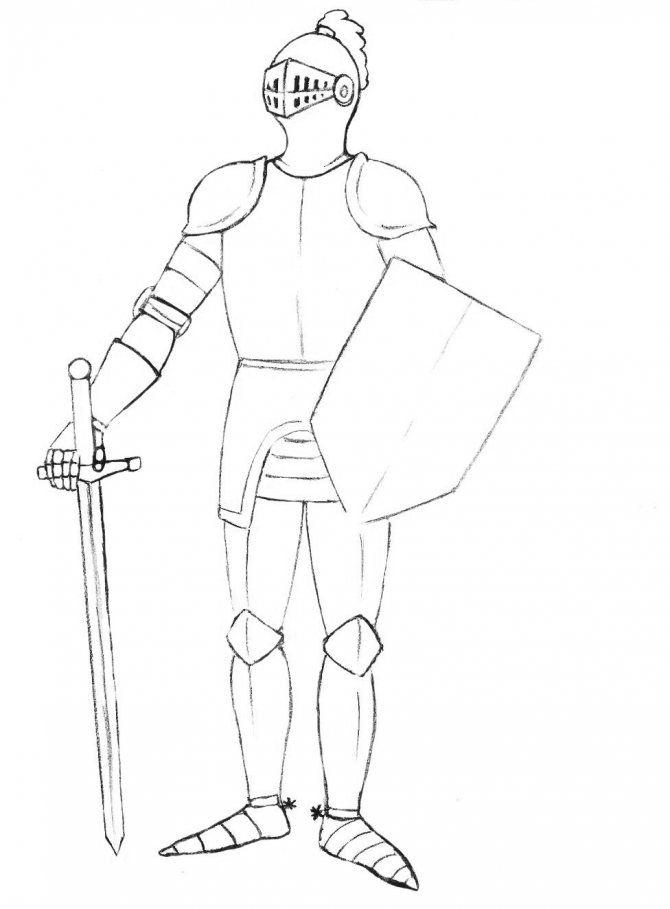
Hello, dear readers! Today we have prepared for you another drawing lesson in which we will tell you how to draw a knight. Generally we have already drawn the knight, but concerning that lesson we often read the feedback saying that the drawing is more complicated.
Indeed, our last drawing lesson was not an easy one. We had a very realistic warrior with intricate shading and high-quality drawing. So, today we decided to give you another knight, but much easier. It will be a little bit more complicated than our lessons for beginners, such as articles about drawing Grandpa, the snowman, the robot or the bird from Angry Birds. So, let's draw him!
Rider on Horseback
The knight in armor (a drawing of this historical character can be depicted on a horse) is holding a coat of arms, the symbol of which children can think up on their own or replace it with a sword. This version of the drawing is suitable for middle and high school children or those who have the skill to draw, as you need to observe the proportions of the body of the knight and the horse, as well as to draw small details.
Step by step:
- Start with a schematic drawing of the figure. Use a hard pencil for a light sketch. The body of the horse under the blanket is depicted as a square with a rounded top. Above and to the right of the curved line mark the head and neck of the horse. Above the back of the horse rounded shapes mark the torso head and shield of the rider.
- Rounded parts mark the right leg of the rider with foot and knee. Schematically show the place of the flag. Schematically show the coat of arms or picture on the flag.
- Ovals show the right hand of the rider, which holds the banner. On the head with horizontal lines determine the level of the helmet.
- The contour of the horse's head is finished, the eye and ears on the crown are marked. Mark the oodles and bridle. Under the blanket show 4 legs, hind legs are drawn at a higher level to show the remoteness of the figure.
- According to the finished scheme draw a clear outline of the torso rider, connecting the neck, arms and torso. Additional metal parts are drawn at the bends. Draw a turned face and helmet with chainmail.
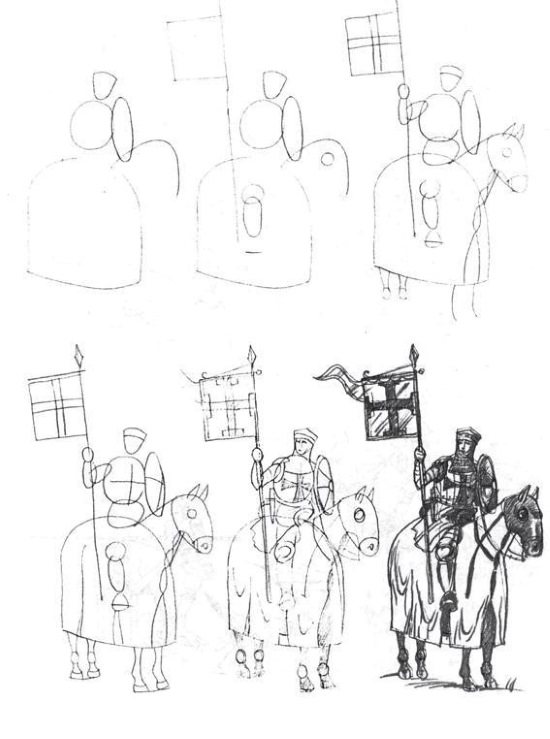

- The base of the banner adds thickness and ends it with a tip, from which a ribbon develops. The coat of arms is drawn in detail.
- The right leg and arm of the knight wearing armor, they are depicted with frequent horizontal lines, the direction of which depends on the position of the body part.
- The horse's harness covers the head and the whole body, so draws the places of folds, adding shading places where the shadow falls.
- Add volume to the horse's legs and add shading as they are under the shadow of the horse blanket.
- They depict the ground level. Erase unnecessary lines, outline the general contour and mark places of shadow.
Drawing a realistic step by step.
Knight in armor (drawing of this character can be depicted standing with a banner and helmet) looks more realistic if he adds a cloak that flutters in the wind.
The process will require:
- paper;
- a medium-hard pencil;
- eraser;
- ruler;
- liner or pen.
Start drawing by creating a schematic image of a person from circles and lines that indicate his figure.
Step by step:
- The lines show the axis of the body, neck, legs, and arms. Instead of the head schematically depict helmet turned to the side. In the center draw a vertical line, creating the volume effect of the helmet. Legs of the warrior straight, arms bent so as to be comfortable holding the shield and banner.
- Schematic lines are used to outline the knight's torso and arms, giving them volume. All parts of the body look like cylinders, but the figures taper closer to the hand and to the waist. The lines are not too smooth, as the body is covered with rigid metal armor.
- They give volume to the girdle and legs, making them wider than the arms. The belt is shaped as a triangle and legs as cylinders. Knees are marked with oval inserts.
- The drawing is supplemented with other elements of clothing. The mantle is drawn in general terms, then folds are added with smooth lines. The mantle covers the left arm in the place of the raised hand. In the right hand makes a sketch of the sword, the hand covers the cloth. The warrior's belt and part of his legs are covered by a part of the robe that resembles a skirt. Add small folds.
- Detail helmet: make a vertical shock helmet, outline the general contour, eye holes and paint them. At the bottom of the helmet draw repeated holes for breathing. These holes are equally spaced and of the same size.
- Detail the upper body: erase auxiliary lines, depict the cord that ties the mantle under the helmet, from it lead smooth contour lines of the mantle and folds. Take the contour of the mantle behind the back. Make a general outline of the right arm and draw a pointed spear in it. For convenience, can use a ruler.
Erase auxiliary lines from the torso and outline the general contour with a cross on the chest. This part of the body is dressed over the lats in a shirt, so the lines show the folds stretching toward the raised arm. Close to the waist make several vertical folds to show volume.
- Draw a thick belt on the hips of the warrior and the sword scabbard attached to it. Around the hilt of the sword is shown winding, drawing several lines overlapping each other.
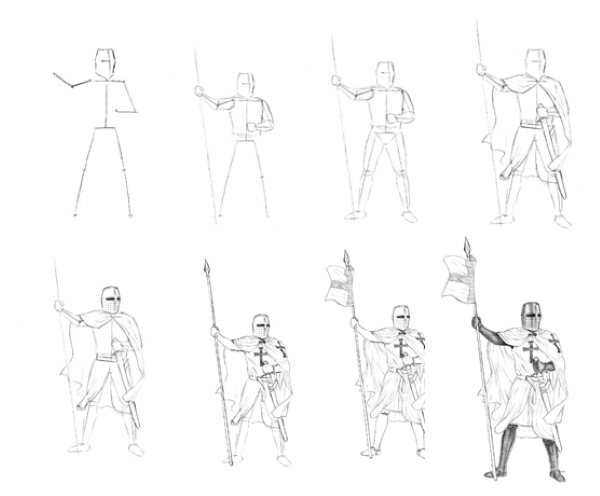

- Detail the lower part of the body: finish the lower level of the robe and add smooth, long, vertical lines to the folds, add creases to the garment covering the belt. Here smooth lines lead from the waist to the knees.
- Create a general contour of legs, erasing the previous sketches. On the knees represent the connecting line of the armor with 2 lines, at the feet draw spurs.
- At the top of the spear draw a banner with the coat of arms. The flag develops in the wind in the same direction as the mantle, so they add folds.
- Add shadows to give volume and realism to the picture. Vertical hatches cover the edges of the helmet and the nearest places to the vertical center line. A lighter hatch covers the whole helmet, creating a soft transition.
- Soft light hatchings crosswise cover the legs and arms. All lines are made across the limb. The second layer of hatching is applied with light pressure, darkening the sides and places that are covered with fabric. Try to make the transition soft and gradual.
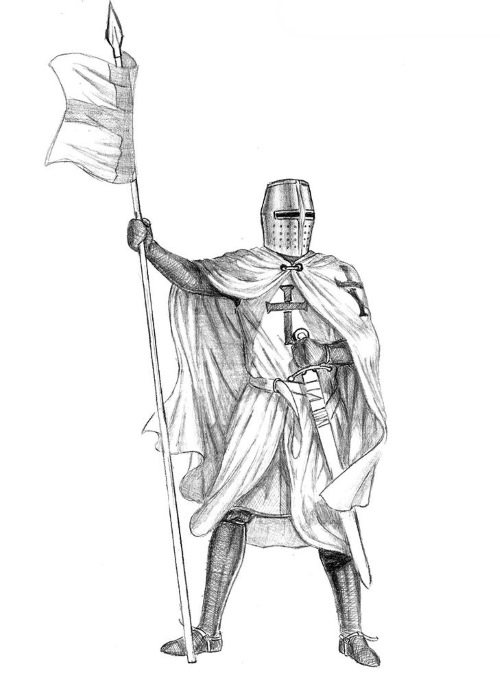

- Determine the source of light and according to him do the hatching on the mantle in places of shadow. If the light falls on the figure's left side, almost the entire left side of the knight should be shaded less. The folds and the forearm are marked by lightly pressing the pencil. To get a deeper shadow, the area is shaded twice, making cross motions with the lead.
- Add shadows on the flag, spear and surface on which the warrior stands.
Tips and tricks
Drawing a knight in armor can be made easier or more realistic at some stages, if you follow some simple tips:
- Preliminary sketching. In advance place the sheet in the right direction and think through the composition of the drawing, which has only 1 character or several. Designate all the characters with conventional figures.
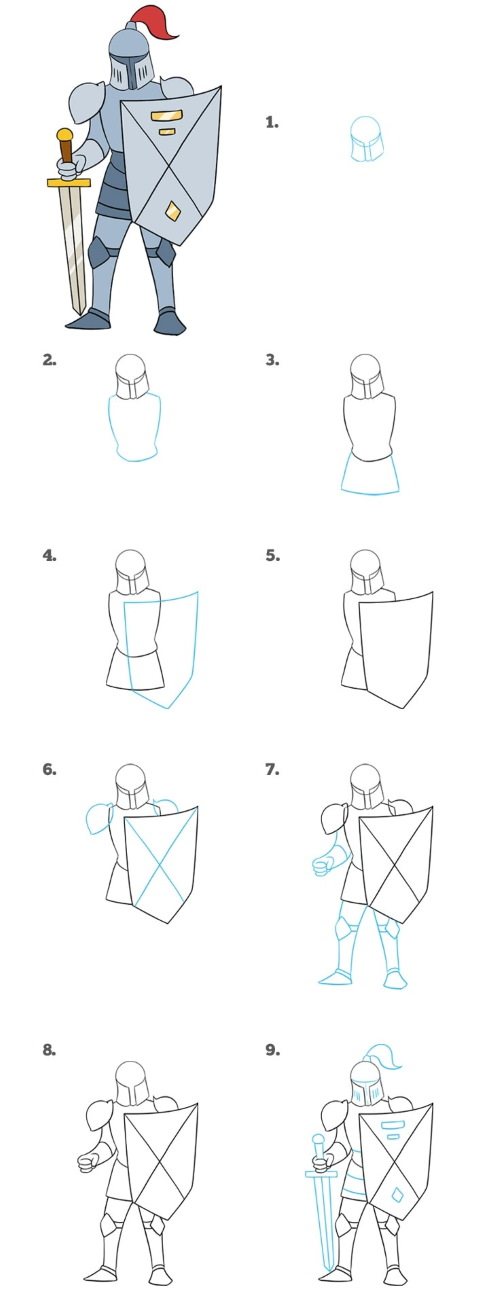

Knight in armor - a step by step drawing
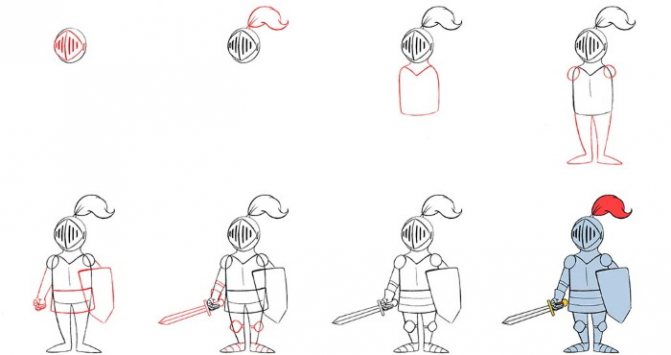

Knight in armor - a step by step drawing
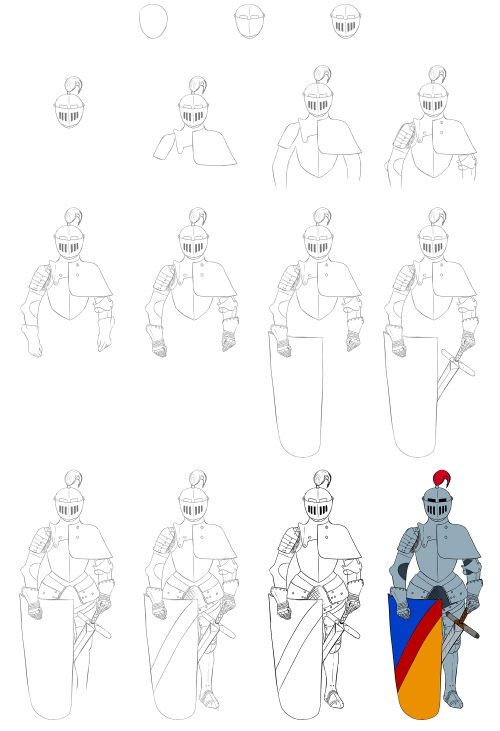

Knight in armor - step by step drawing
- Schematic image. First, create a character sketch with pencil, then outline its contour and then trace it with a liner or pen. After the general outline is created, erase all auxiliary lines.
- Observance of proportions. To make the character look believable, observe all body proportions. To do this, make sure that the length of the whole body is equal to the length of 7 heads. Foot is approximately equal to the length of the head. The distance from the top of the head to the hips equals the length of 3 heads.
- When drawing the head of the knight, it is made slightly larger than that of a normal person because of the extra volume from the helmet.
- The pose of the warrior can be changed at your discretion, but note that the shield and sword knights carried in the same hands.
- The image of the coat of arms on the banner is drawn according to historical information or come up with your own, depending on the purpose of drawing.
- Volume. Light shading helps to add volume to the figure and create the effect of falling light and shadow.
Step by step instruction for drawing the knight


1. Start drawing the helmet using a circle. Inside the circle, draw two curved lines. Draw a set of straight, parallel lines down from the curved lines. Then apply a curved square shape along each of these lines. This creates the faceplate of the helmet.
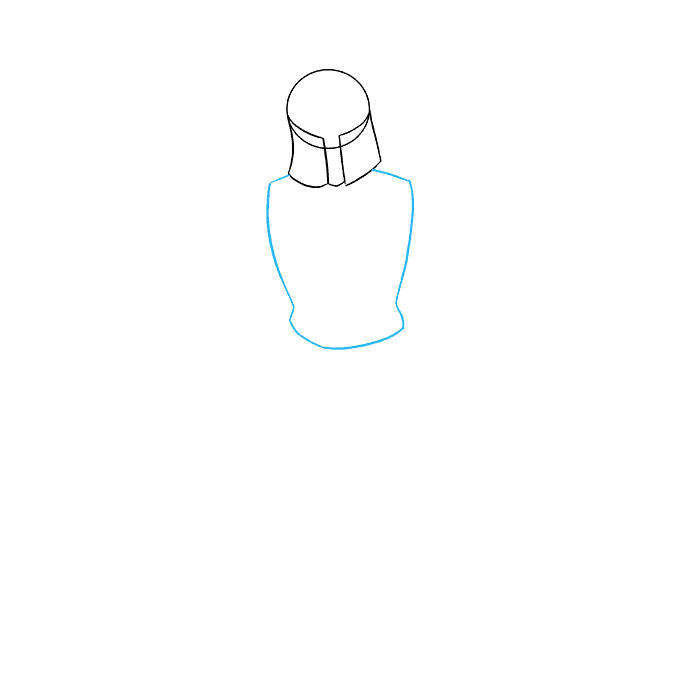

2. Apply the breastplate armor underneath the helmet. Use a series of curved lines meeting in rounded corners. Notice how the armor curves inward just above the waist.
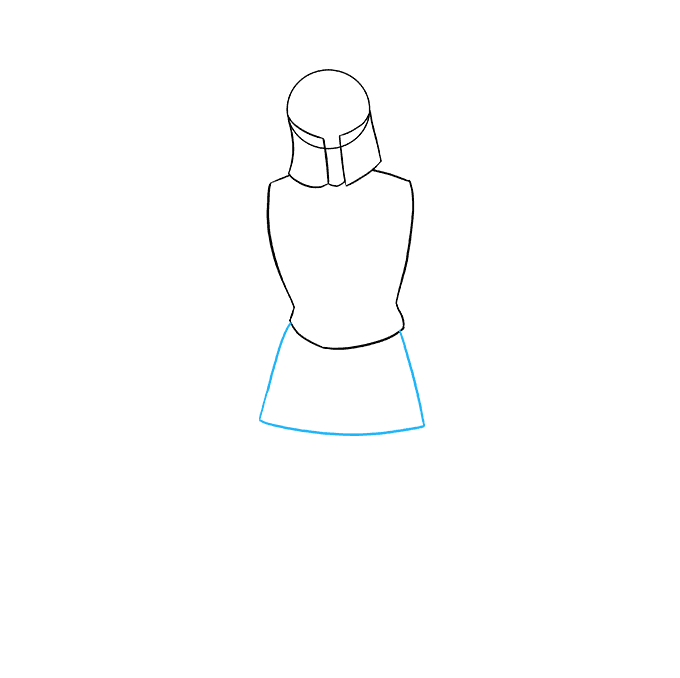

3. Next, you will draw the "skirt" of the armor, called the tassel. To draw the flavor, draw two slightly curved lines down from the breastplate. Then connect them using the curved line.
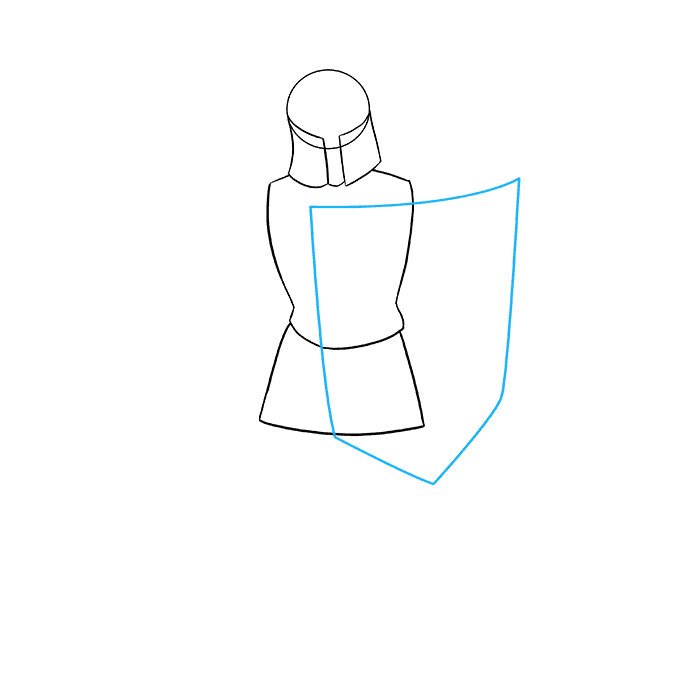

4. Next, draw the shield. Start with the large shield by drawing a curved line through the bib, extending it over the shoulder. Then draw a pair of slightly curved lines down from each end. From these lines, bend a pair of straight lines inward until they meet at a point.


5. Erase the guide lines from the screen.
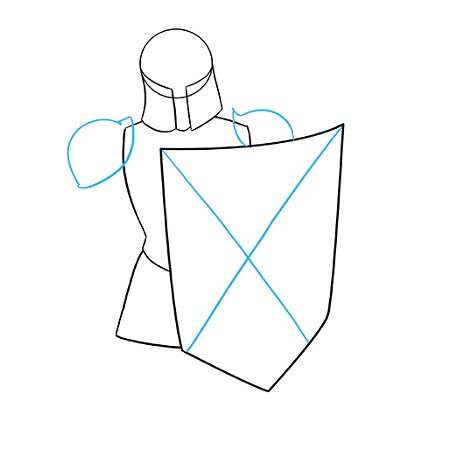

6. Decorate the shield by drawing diagonal lines across it, intersecting in the center at a perpendicular angle. Then draw the shoulders of the armor. Draw a curved line, like a semicircle. Then draw a short line from each end. Connect these lines using a longer curved line.
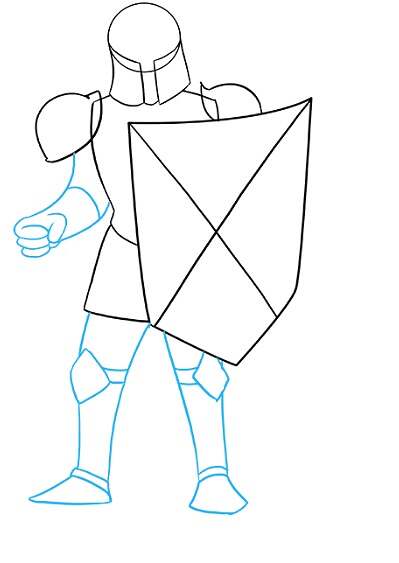

7. Using a series of curved lines, draw a hand and fingers. Draw a curved line through the hand to distinguish the glove or armored glove. Then draw the feet. Circle the legs and feet with curved lines. Draw a rhombus on each knee and two parallel horizontal lines behind it. If necessary, erase the guide lines. Draw another set of curved lines across the ankles.
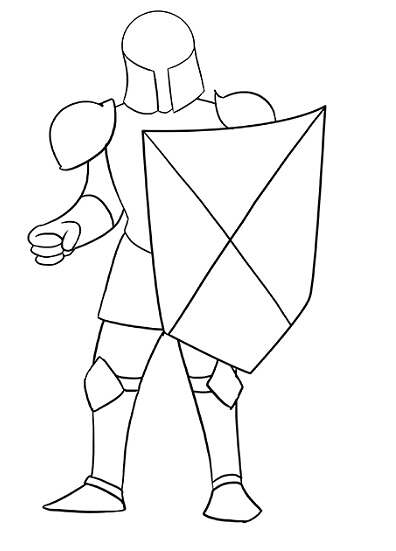

8. Erase the guide lines from the helmet and shoulders.
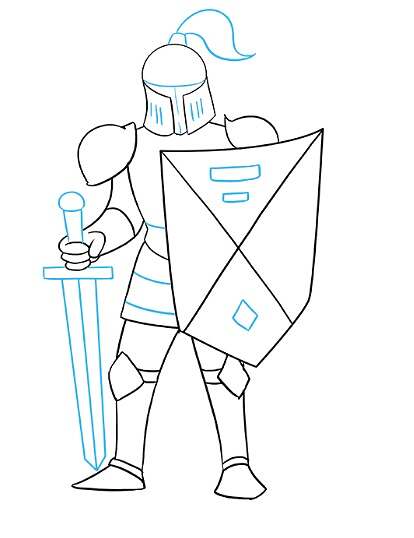

9. Draw a sword in the knight's hand, erasing guide lines if necessary. Use a couple of lines for the hilt and a circle for the bow. Under the hand, draw a guard using a narrow rectangle. Draw three lines to form the blade, meeting in a sharp place. Detail the breastplate and brush with curved horizontal lines. Decorate the shield with rectangles and rhombuses. Finally, detail the helmet. Circle the rounded shape of the top and draw two curved lines that intersect at a sharp point. Draw horizontal and vertical lines on the helmet.
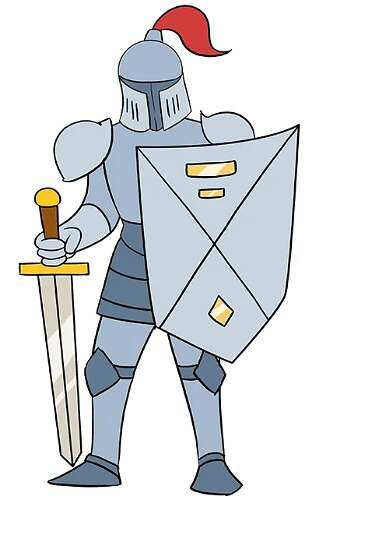

10. Paint your knight, then expand the scene using our other medieval drawing guides. Give him a castle, a trusty horse, and a dragon for battle.

